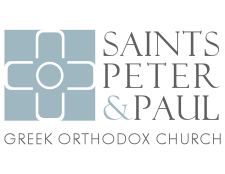December 17th, we commemorated the “Three Holy Children (Ananias, Azarias, and Misael). Who are these children? The three children I know about from Daniel were named at birth: Shadrach, Meshach, and Abednego. I was told that they had “Christian names”: Hananiah, Mishael, and Azariah. If that is so, how in the world did they acquire all of these names? – JZ
I chose to answer this question, even though it talks about a feastday from December, because we just read the section from the book of Daniel which talks about these Three Holy Children, or sometimes called Three Holy Youths, during the Divine Liturgy celebrated on Holy Saturday Morning. We will first look to answer the question about their names and then go on a slight tangent to talk about why they are important for Holy Saturday.
The first thing to clarify is that Ananias, Azarias, and Misael are just Greek transliterations of the Hebrew names Hananiah, Azariah, and Mishael, so there is no substantive difference between these names. The context in which one is working will influence whether the Greek or Hebrew versions are used, thus when we look at our Church calendars for December 17th and see Ananias, Azarias, and Misael, we shouldn’t be confused into thinking that they are different from the Hebrew versions of the same name.
Secondly as it relates to the names, there is an unfortunate misunderstanding in the very question itself. Hananiah, Mishael, and Azariah were the names given to these three children at their birth, contrary to what our questioner supposed. The beginning of the book of Daniel tells of the Babylonian King Nebuchadnezzar, and his recruiting of the recently captured Jewish population into the Babylonian civil service. We read, “Now among them there were Daniel, Hananiah, Azariah, and Mishael, sons of the tribe of Judah. So the chief of the eunuchs gave them names: to Daniel the name Belteshazzar; to Hananiah, Shadrack; to Mishael, Meshach; and to Azariah, Abednego” (Daniel 1:6-7). It makes sense that a person being brought to the palace to work for the king and rise to a place of prominence in the civil service would have their name changed to reflect the language and culture of the king.

Please send any questions for future Q&A features to Fr. Panagiotis at frp@ssppglenview.org
